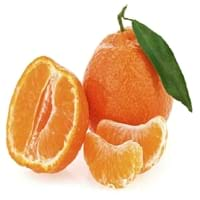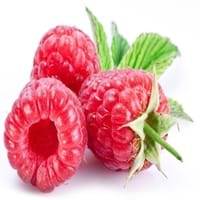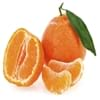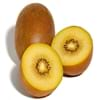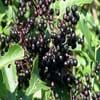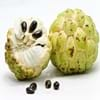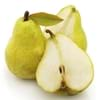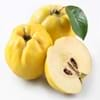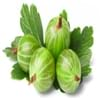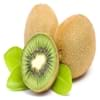Health Benefits
Cancer prevention, Heart care, Increases metabolic rate, Reduces stress
Cancer prevention, Heart care, Prevents macular degeneration, Reduces blood circulation problems
General Benefits
Boosts immune system, Controls blood pressure, Digestive aid, Eye care, Helps in weight loss
Anti-inflammatory properties, Controls blood sugar levels, Digestive aid, Eye care, Helps in weight loss
Skin Benefits
Brightens and lightens complexion, Treatment of acne, Treatment of dark spots
Anti-aging benefits, Brightens and lightens complexion
Hair Benefits
Promotes longer and healthier hair, Protects hair
Acts as moisturizer, Regulates hair growth, Shiny hair
Allergy Symptoms
Abdominal pains, Breathing difficulty, Coughing, Diarrhea, Drop in blood pressure, Fainting, Runny nose, Skin rash, Sneezing, Swelling of mouth, tongue or lips, Vomiting
Breathing difficulty, Eczema, Hives, Itching, Nasal congestion, Runny nose, Sneezing, Watery eyes, Wheezing
Side Effects
Allergic reaction
Allergic reaction
Best Time to Eat
As a snack in the late afternoon, Don't consume at night and before bed, Eat the fresh ones, avoid mixing with any other foods, don't eat after meal., Morning time (before lunch)
Best if taken as a breakfast (or empty stomach), As a snack in the late afternoon, Don't eat after meal, Morning time (before lunch)
Vitamin A (Retinol)
Not Available
Vitamin B5 (Pantothenic Acid)
Vitamin C (Ascorbic Acid)
Vitamin K (Phyllochinone)
Lutein+Zeaxanthin
Not Available
Calories in Fresh Fruit with Peel
Not Available
Calories in Fresh Fruit without Peel
Not Available
Calories in Frozen Form
Not Available
Calories in Dried Form
Not Available
Calories in Canned Form
Not Available
Varieties
Clemenules or Nules and Nadorcott
Amity, August Red, Boyne, Canby, Caroline, Comet, Dinkum, Dorman Red, Latham, Meeker, Black Hawk, Hayda, Lauren, Meeker and Latham
Color
Orange
Black, Purple, Red, Yellow
Taste
Sweet, Tangy, Tart
Sweet
Origin
China
Europe, North Asia
Soil Type
Loam, Sandy, Well-drained
Sandy loam
Climatic Conditions
Warm to hot climate
Cold
Facts about
- Clementine was first grown at the citrus research center in USA in 1909.
- It is called as"Christmas orange" as it's limited growing season falls during winter.
- It's a hybrid between Mediterranean and Oranges.
- There are more than 200 varieties of raspberries.
- In USA, 90% of the raspberries are grown in Washington, California and Oregon.
- They do not ripe after they are picked.
- A raspberry contain 100 to 120 seeds.
Top Producer
Spain
Russia
Other Countries
Argentina, Brazil, Egypt, Italy, Japan, Morocco, Turkey, United States of America
Azerbaijan, Canada, Mexico, Poland, Serbia, Spain, Ukraine, United Kingdom, United States of America
Top Importer
United States of America
United States of America
Top Exporter
Spain
Poland
Botanical Name
Citrus clementina
Rubus Idaeus
Synonym
Not Available
Not Available
Subkingdom
Tracheobionta
Tracheobionta
Division
Magnoliophyta
Magnoliophyta
Class
Magnoliopsida
Magnoliopsida
Species
C. clementina
R. idaeus
Generic Group
Citrus fruit
Rose
Difference Between Clementine and Raspberry
We might think that Clementine and Raspberry are similar with respect to nutritional value and health benefits. But the nutrient content of both fruits is different. Clementine and Raspberry Facts such as their taste, shape, color, and size are also distinct. The difference between Clementine and Raspberry is explained here.
The amount of calories in 100 gm of fresh Clementine and Raspberry with peel is Not Available and 53.00 kcal and the amount of calories without peel is 47.00 kcal and Not Available respectively. Thus, Clementine and Raspberry belong to Low Calorie Fruits and Low Calorie Fruits category.These fruits might or might not differ with respect to their scientific classification. The order of Clementine and Raspberry is Sapindales and Rosales respectively. Clementine belongs to Rutaceae family and Raspberry belongs to Rosaceae family. Clementine belongs to Citrus genus of C. clementina species and Raspberry belongs to Rubus genus of R. idaeus species. Beings plants, both fruits belong to Plantae Kingdom.
